It’s hard to believe that it’s been nearly two years since the introduction of the Tissot PRX line of watches. Looking at everything from the quartz variants to the PRX automatic versions, chronographs, and the 35mm models, it’s fascinating to see how well the collection has grown into something collectors have almost universally accepted.
Jump To:
Case | Dial | Bracelet | Movement | Overall Thoughts
At the time of its release, the Tissot PRX stood alongside a swarm of integrated bracelet sports watches that were continually climbing in price—both at the AD level and secondary markets. This came from the ranks of brands like Patek Philippe, Audemars Piguet, and newly-hyped players like Girard-Perregaux and Vacheron Constantin. But with its price (well below $1,000), vintage appeal, and brand backstory, the Tissot PRX continues to stand as one of the best buys in the affordable watch space and the family of integrated bracelet sports watches.
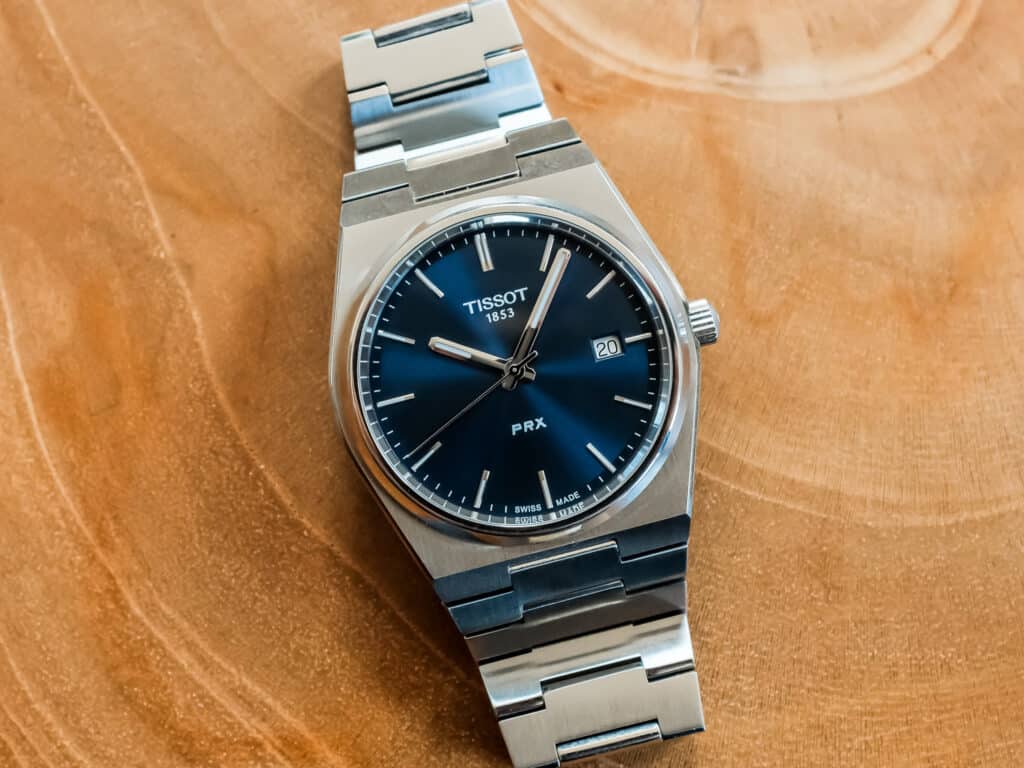
I’ve always found the quartz models to be the best way to go. It’s what we managed to get our hands on here at TBWS and currently, on bracelet this model retails for just $395. What Tissot calls a “throwback to a flagship design from 1978” is almost best enjoyed with the quartz version, if you ask me. That’s especially true when you look back at some of the older quartz Seastar timepieces Tissot had the pleasure of pulling from when putting these new models together.
Whichever option you choose, the Tissot PRX practically put the fun back into watch collecting at a time when many of us felt jaded and discouraged after seeing climbing prices for similar models from “the big brands” that were used and abused.
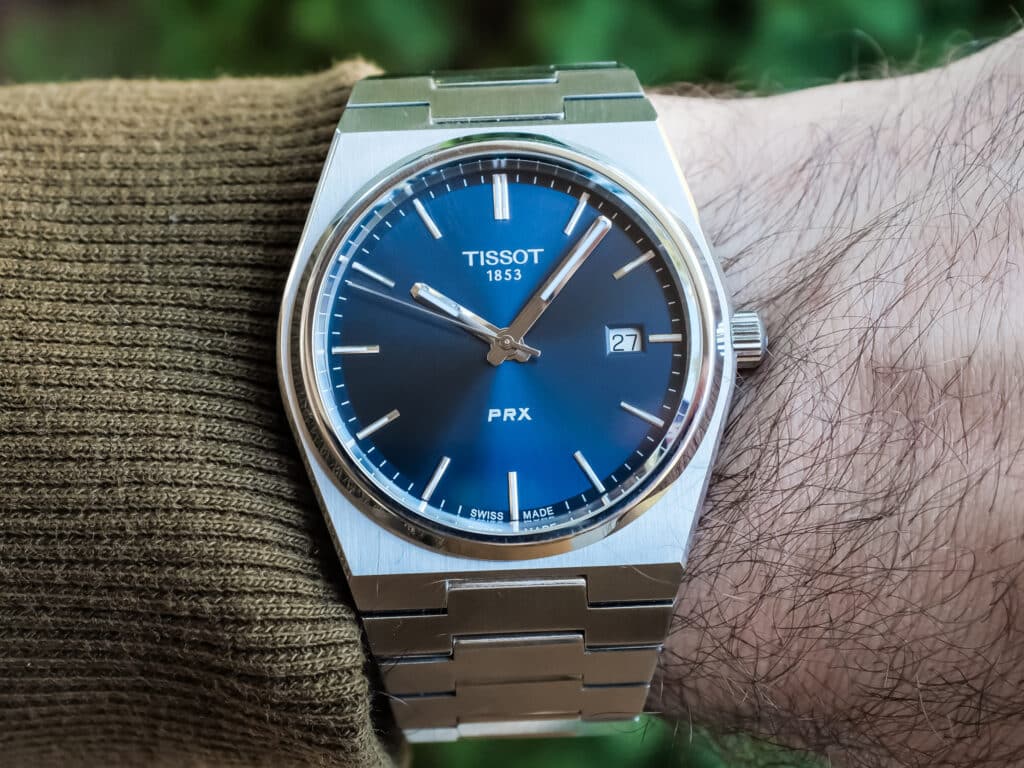
40mm Case Design That Wears Slightly Large
This specific Tissot PRX model features a stainless steel case that’s 40mm wide, 10.4mm thick, and 44.6mm lug to lug. Immediately after putting it on wrist, I realized that the 35mm variant was probably the best way to go for me. I think this is due to the general design of the integrated bracelet architecture. And while it doesn’t feel huge, I think it’s something you should consider if your preferences fall within the sub-40mm space. Truthfully, my calipers clock this one in at the end links at 51.5mm—so keep that in mind.
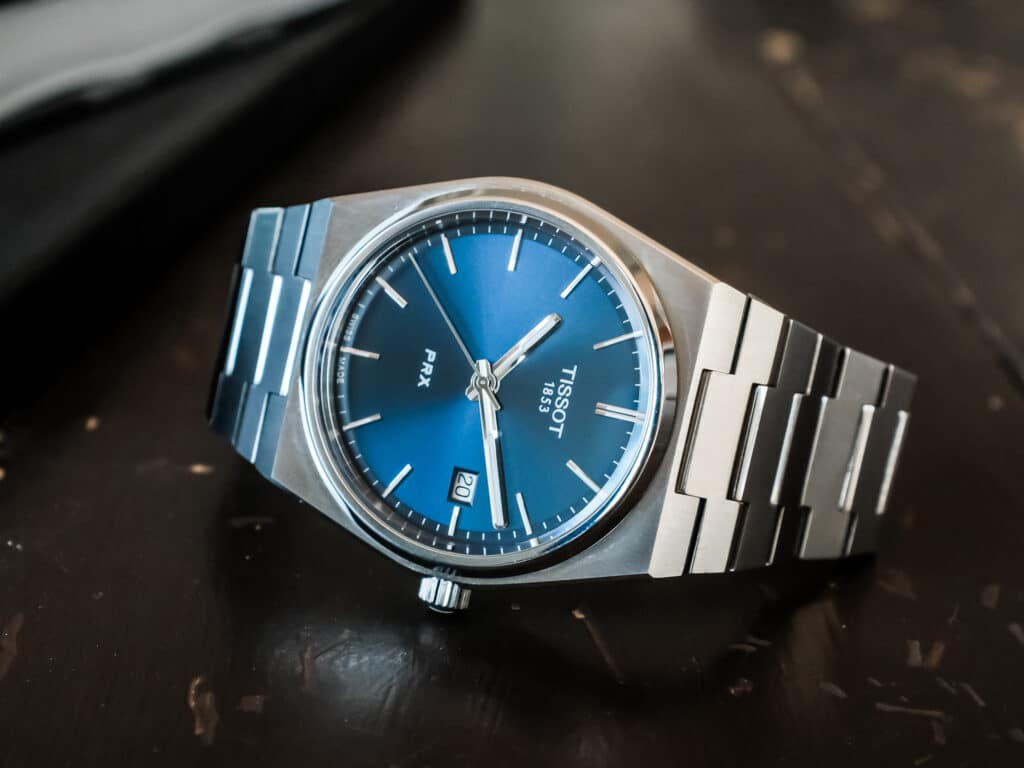
Tolerances feel tight as heck—from the crown operation to where the bracelet meets the case, the clean bezel, and the integration of the flat scratch-resistant sapphire crystal. Everything is brushed for the most part, with the exception of the bezel and the upper edges of the case itself. Overall, the edges all the way down to the caseback feel super crisp and reminiscent of a watch that is far more expensive. AND even with the push-pull crown, you get 100m of water resistance! That was such a pleasant surprise, especially considering how sturdy the gasket and crown operation feel.
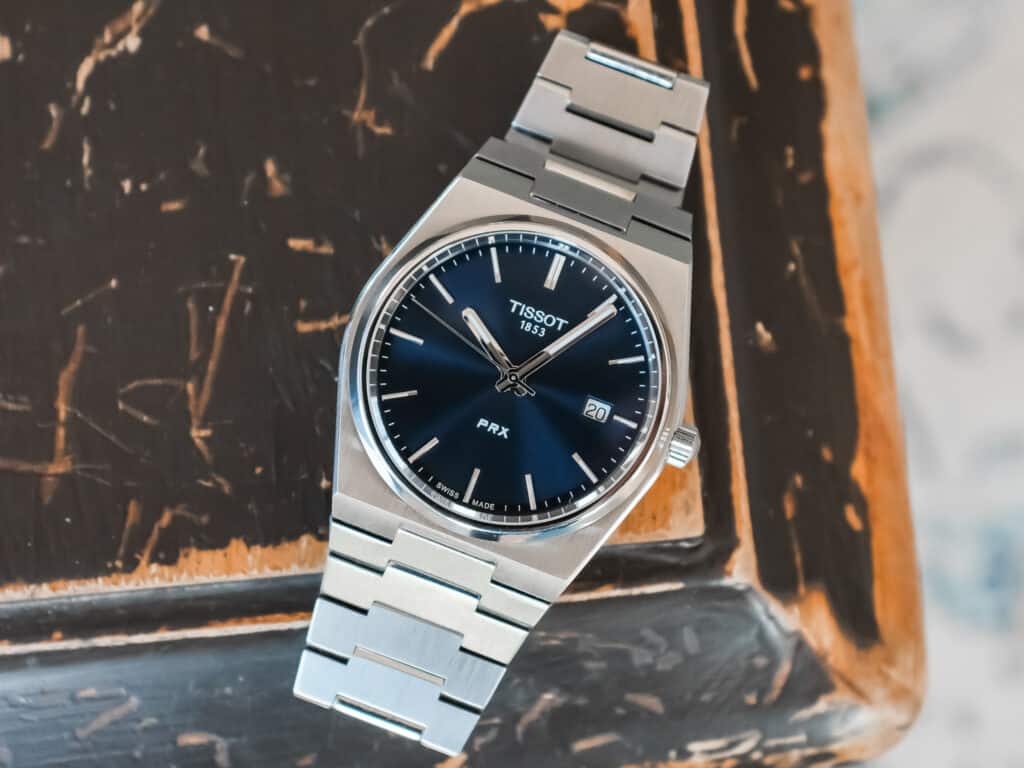
Simple But Effortlessly Efficient Dial
The blue dial on this Tissot PRX is something that really stopped me in my tracks. I usually can’t stand dials that are overly-ornate or sunburst-y but this one felt different. The deep shade of blue fluctuates from the center of the dial to the edges but it isn’t overly-dramatic. In some ways, it reminds me of the subtlety I see in my Gen-1 Orient Mako Dive Watch. Paired with the simple baton hour markers with light lume and polishing, it makes for a nicely balanced dial that is both formal and sporty. If this isn’t the dial color for you, Tissot offers a black dial, two different green versions, and a silver model.
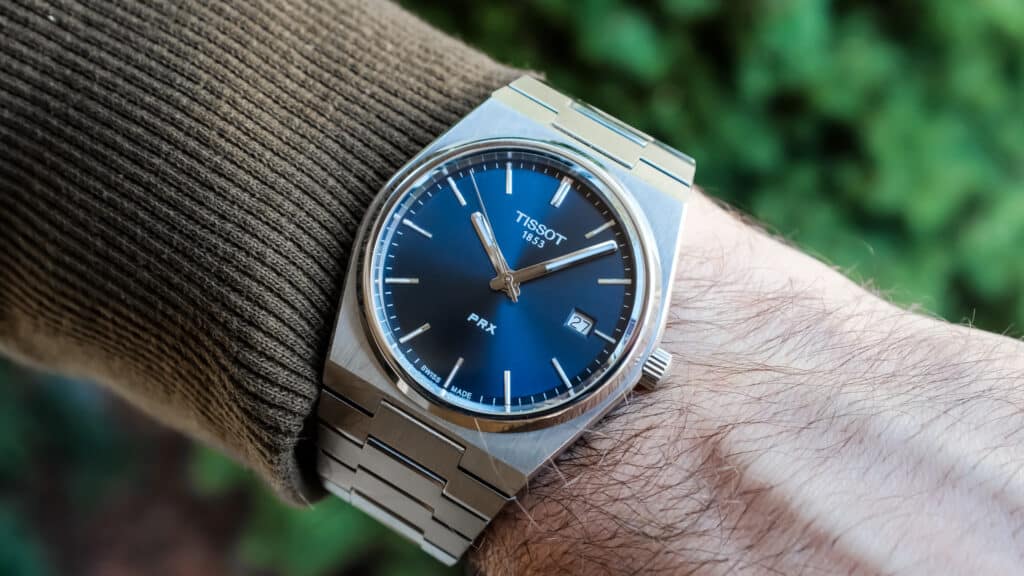
Text on the blue dial is light, with just “Tissot 1853” up top and “PRX” just above the 6 o’clock marker. To match with the markers, Tissot went with a set of lumed baton hands and a simple, polished needle-like seconds hand. Thankfully the blue doesn’t really get in the way of all these other polished surfaces, so legibility isn’t a huge issue. But at the same time, it isn’t the best. At 3 o’clock there’s a simple date window and I love the sizing compared to everything else on the dial.
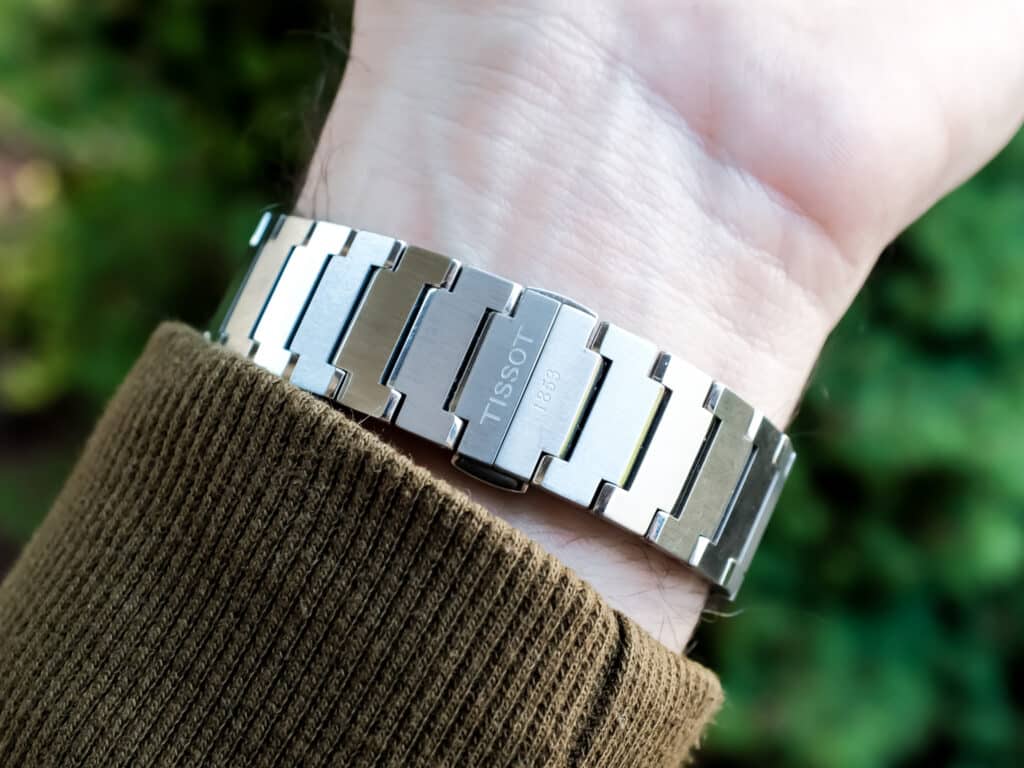
Excellently Executed Integrated Bracelet
The Tissot PRX bracelet is one of the most impressive I’ve handled on a watch in this price range. At this point, there are Seikos that are priced well above this Tissot with comparably laughable bracelet quality. At the lugs the width comes in at 27mm and it all tapers to 17.5mm at the clasp. That width at the lugs is typical with this integrated bracelet look and not necessarily something to be afraid of on paper. With the butterfly clasp, there’s no micro-adjustment. But Tissot does include half links to help you with the fit.
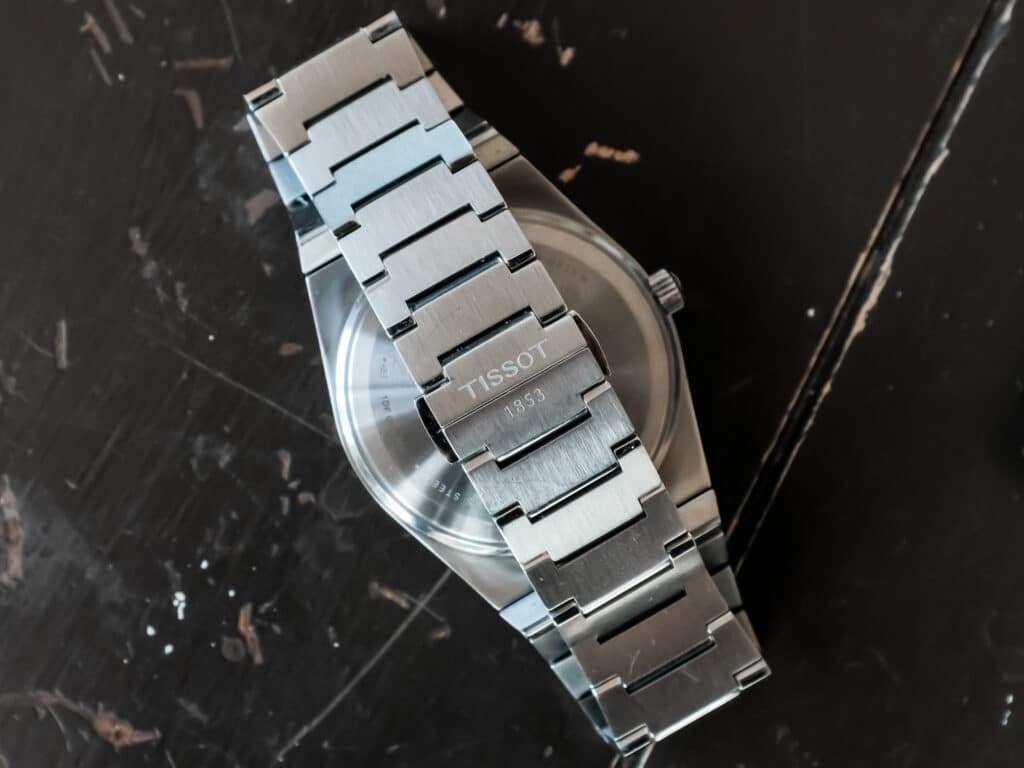
These links are also completely brushed on the tops and sides. The only polished surface can be found where the tightly-fit links meet. Everything feels great in terms of fit and there’s none of the rattly feel you’d often get with cheaper bracelets at this price range. When secured, the butterfly clasp has such close-fitting and shallow profile and dual push buttons have such a satisfying feel to the way they operate. Finally, Tissot also included quick-release spring bars in case you want to experiment with other strap options—like the leather versions the brand also sells for this watch.
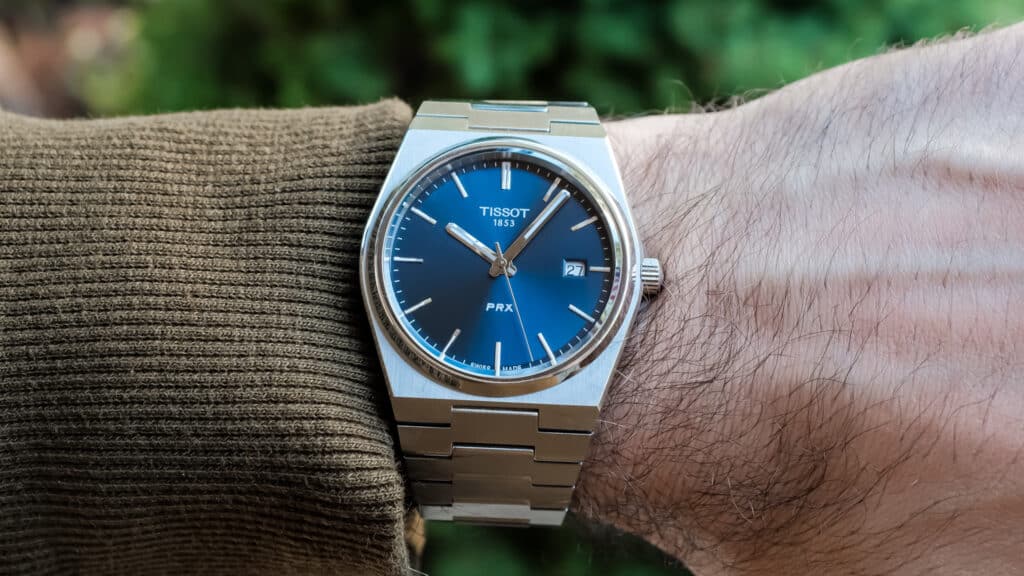
Movement
Like I mentioned before, I think the quartz PRX is the one to get. It’s more in line with the vintage Tissot Seastar models, more accessibly priced, and probably makes for an easier watch to wear overall. Sure, the Powermatic 80 is cool but I just love the convenience of a quartz movement. The Swiss made ETA F06.115 movement gives you a power reserve of about 2 years together with an end-of-life indicator. No complaints from me here and just remember—you can still pick up the chrono or several of the other Tissot PRX Powermatic models if this isn’t interesting enough.
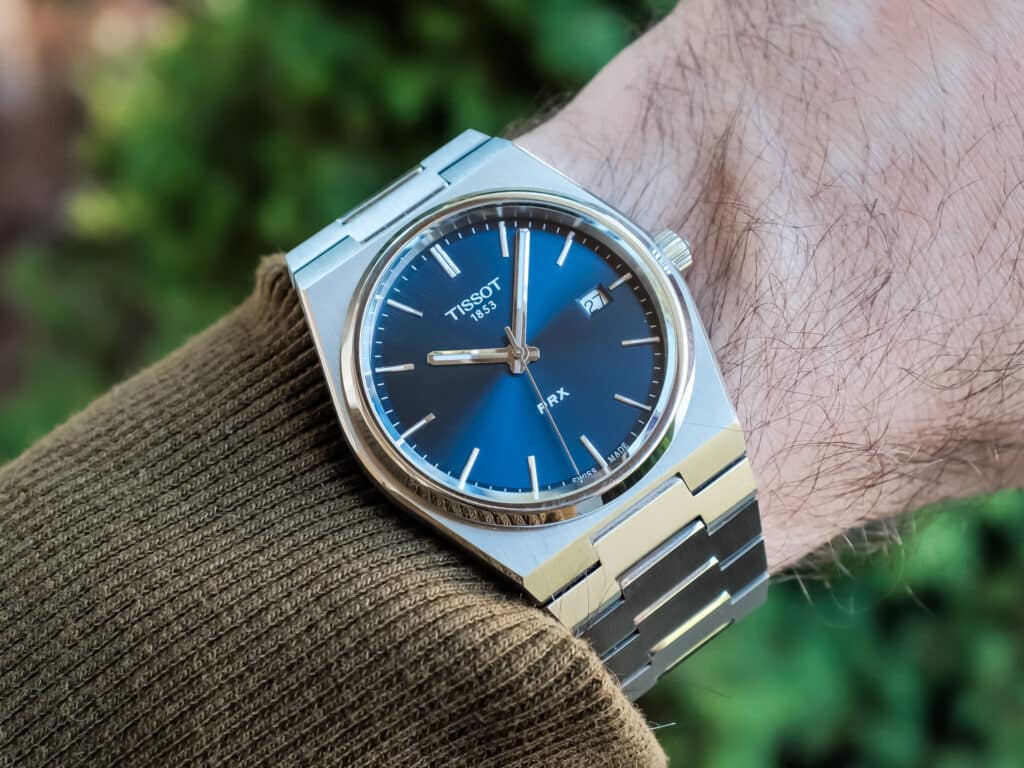
Overall Thoughts
To me, Tissot watches make for some of the best pieces to enjoy no matter what “stage” you’re at in the watch collector lifecycle. Whether its an automatic watch, a cool quartz piece like this, or something else, I always love recommending this brand. This quartz Tissot PRX is just such an easy watch to love and it’s really hard to keep myself from falling into an impulse purchase on one of those 35mm models. With the exception of the sizing, which didn’t totally work for me, I’d say there’s almost nothing else to complain about. Well, I guess the lume could’ve been a little stronger but that’s it.
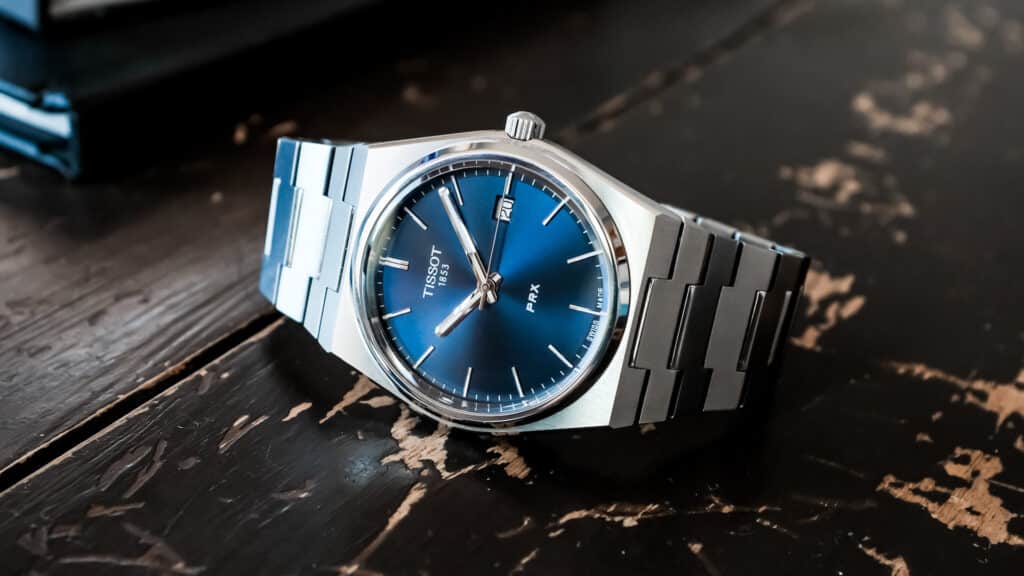
Since its introduction, there are a ton of new Tissot PRX models available by this point. They even the Tissot PRX Powermatic 80 steel & 18k gold version that clocks in at almost $2,000! But again the beauty here is the variety and the affordability. To learn more about the Tissot PRX and all of the other available models, check out the brand’s official site.

Co-Founder & Senior Editor
Michael Peñate is an American writer, photographer, and podcaster based in Seattle, Washington. His work typically focuses on the passage of time and the tools we use to connect with that very journey. From aviation to music and travel, his interests span a multitude of disciplines that often intersect with the world of watches – and the obsessive culture behind collecting them.
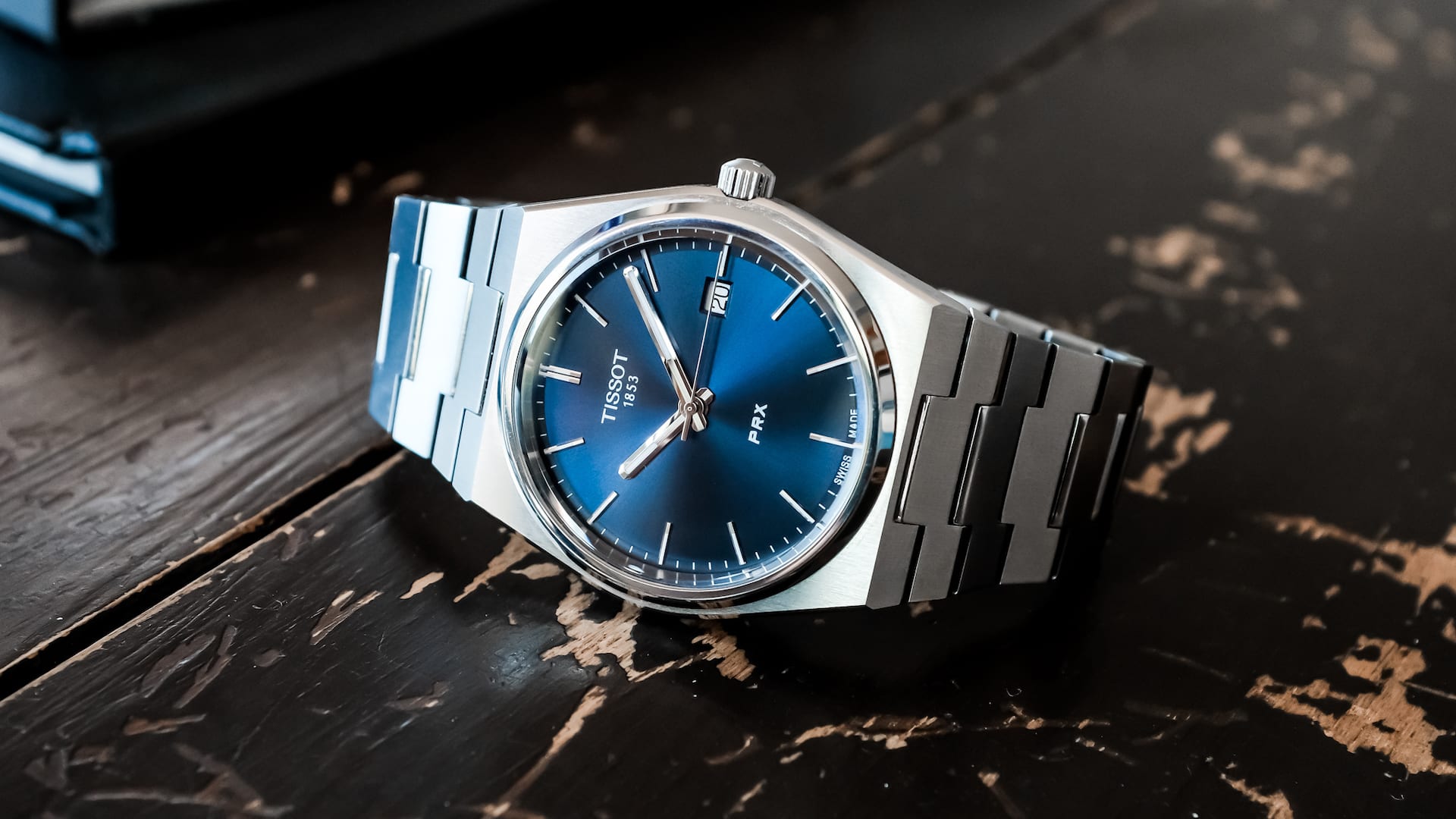
I have a 35mm PRX quartz coming in the mail this weekend, I’m totally stoked about it. I initially didn’t like the design as it was a bit too edgy for me but something just called and with the heritage and 35mm case size, coupled with the super affordable (and more authentic to its heritage) quartz model I have a quiet suspicion that this might be my go to sporty business casual, work from home watch, ie the one I will wear 90 % of the time.
Surprised you didn’t spring for the 35mm option Mike, I have the same wrist size as you and Kaz, I’ll let you know the wearing experience
Definitely thinking about the quartz 35mm! Just hoping for a few more color options 🙂 sitting and waiting for now.
Hey Michael,
I just did order the quartz 35mm in blue. Thanks for your comprehensive review. I don’t get why so many nice watches are now being made in 40mm and larger. I am 6′ and have a 7 3/4 inch wrist and those 40mm watches look like clown watches on me. I have some watches from the 80’s and 90’s that are like 35 and 36mm. Two Omega Seamasters and an older Cartier tank watch that is even smaller but looks great on. I sent Ashford an email with that same question and asked them to contact me if they receive any men’s watches in the 35, 36 range. Do you have any thoughts about the Hamilton H38455131. It’s a automatic with, I believe, an updated mechanism. Thanks again.
Wich version will suit me best? 35 or 40 mm.
Wristsize is 17,5 cm / 6,9 inch
That’s exactly the border between 35 or 40. I would go to an AD to see irl what suits you best.